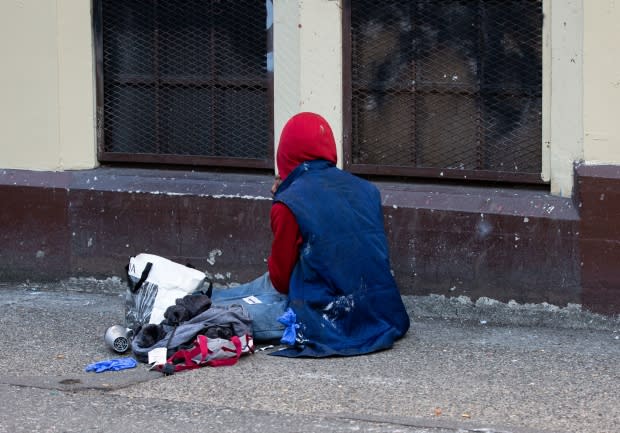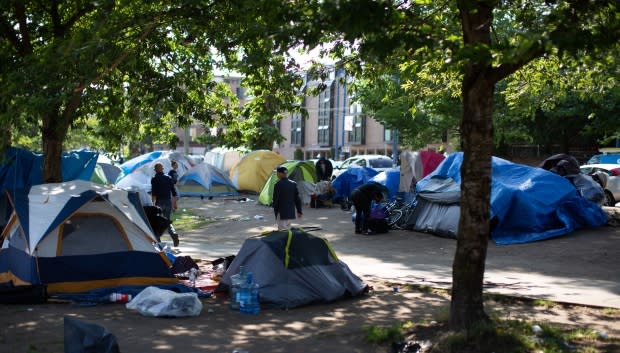How did we get here? Failed public policy and Vancouver's Downtown Eastside
Vancouver's Downtown Eastside has been the epicentre of homelessness and drug addiction in the province for decades. It has also been the focus of public policy to address these problems for almost as many years.
Yet for a neighbourhood in the public spotlight, a walk along East Hastings Street these days looks like policymakers have turned a blind eye.
Mayor Kennedy Stewart recently acknowledged to Stepehn Quinn, the host of CBC's The Early Edition, that the notorious neighbourhood is in the worst shape he has ever seen. Homelessness and open drug use are hard to miss on area streets. and people who have been on the front lines of housing, addiction and mental health programming say years of inadequate services are partly to blame.
Donald MacPherson, the former drug-policy coordinator for the City of Vancouver and current director of the Canadian Drug Policy Coalition, has seen a lot of policies introduced into the Downtown Eastside, including the highly-lauded Vancouver Agreement in 2000.

Signed by all three levels of government, the agreement was a 10-year plan to improve housing and social welfare in the area. According MacPherson, many of the agreement's initiatives "came to a crashing end when the Harper Government was elected and did not participate."
"A well thought-out strategy to provide supportive housing, mental health and addiction treatments city-wide, to provide harm reduction services city-wide, never really actualized," said MacPherson.
Today, the concentration of homeless people on the streets and in Oppenheimer Park's tent city shows the problems the Vancouver Agreement intended to fix are far from solved.
Retired politician Libby Davies, a former city councillor and NDP member of Parliament for Vancouver East who was the federal housing critic, has seen a lot of housing ideas come and go.
"If you can't have a sustainable program — and that's critical for housing — and if you don't have the partnership of the federal government ... it creates a dire, serious situation."

After the Vancouver Agreement, Davies said the federal government was notably absent from housing initiatives.
"We had this huge gap where nothing was happening, because the federal government had opted out of and completely abandoned building new social housing," said Davies. "We're still recovering from that."
In 2017, the federal government announced a 10-year multibillion-dollar national housing strategy. Davies hopes it is more than lip service.
"Big announcements are one thing, but getting the money, shovels in the ground ... this is what's urgently needed right now," said Davies.

Dr. John Miller, former B.C. provincial health officer, said modular housing is one step in helping the homeless and precariously housed, but without "wrap-around' support services for mental health and addiction, chaos will continue.
He said when Riverview Hospital closed in the 1970s many patients from the mental health facility gravitated to the DTES and policymakers planned to put mental health services in the community.
"The second step never happened and still hasn't happened," said Miller. "Mental health services, addiction services, physical disability services, all of these things need to be there, and we haven't really put them in place thoroughly yet."
MacPherson, author of the city's Four Pillars Drug Strategy, which is based on the principals of harm reduction, prevention, treatment and enforcement, said the strategy was "never really implemented" and addicts are not getting the help they need.
"We keep propping up this failed drug policy that we have in Canada that continues to criminalize vulnerable people, push them into the shadows and make them the target of the problem," said MacPherson.



